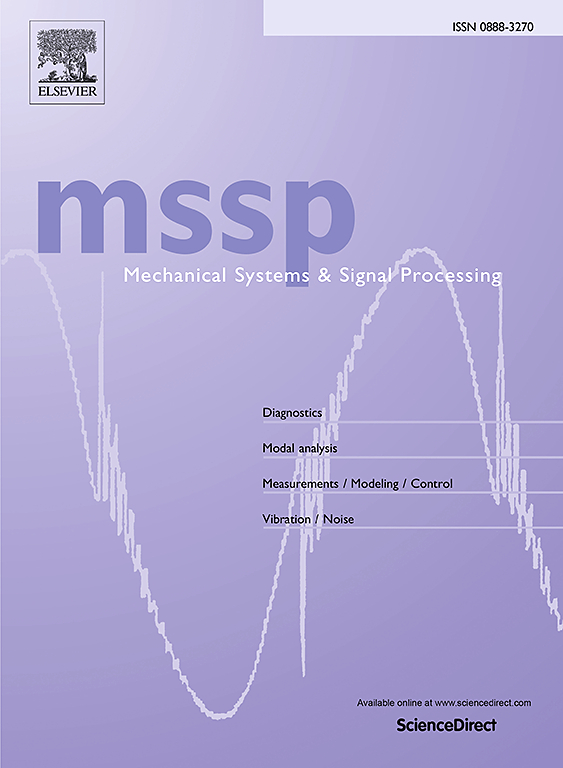整合数据驱动的降阶模型与Kriging有效的传感器放置和全场预测
IF 7.9
1区 工程技术
Q1 ENGINEERING, MECHANICAL
引用次数: 0
摘要
本文提出了一种基于高分辨率数字图像相关(DIC)数据的稀疏在线测量的两阶段方法,用于高效准确的全场位移重建。该方法集成了模态阶数约简和基于kriging的不确定性量化,以解决结构动力学中高维数据分析的挑战。在离线阶段,采用基于自适应几何矩描述子(Adaptive Geometric矩Descriptor, AGMD)的形状特征对高维数据集进行压缩、模态属性识别和残差协方差结构估计。在在线阶段,通过旋转QR分解确定最优放置传感器的稀疏集,通过Kriging插值推断全场响应,并为不确定性量化提供预测方差。在随机激励下的曲面板上对该方法进行了验证。结果表明,agmd测量场与重建场之间存在较强的相关性,并成功识别出多个全场振动模式。在在线阶段,与使用广义最小二乘法(GLS)进行的预测相比,kriging预测的全场响应由离线数据集的经验估计协方差结构提供,显示出更高的准确性。对时间采样数据的验证在95%置信区间内的覆盖概率为94.34%,突出了方法的可靠性和鲁棒性。本文章由计算机程序翻译,如有差异,请以英文原文为准。
Integrating data-driven reduced order models with Kriging for efficient sensor placement and full-field prediction
This paper presents a two-stage methodology for efficient and accurate full-field displacement reconstruction using sparse online measurements derived from high-resolution Digital Image Correlation (DIC) data. The proposed approach integrates Modal Order Reduction and Kriging-based Uncertainty Quantification to address challenges associated with high-dimensional data analysis in structural dynamics.
In the offline stage, Adaptive Geometric Moment Descriptor (AGMD)-based shape features are used to compress the high-dimensional dataset, identify modal properties, and estimate residual covariance structures. In the online stage, a sparse set of optimally placed sensors, determined via QR decomposition with pivoting, is employed to infer full-field responses through Kriging interpolation, which also provides predictive variances for uncertainty quantification.
The methodology was demonstrated on a curved plate under random excitation. The results show strong correlations between measured and reconstructed fields using AGMDs and successfully identify multiple full-field vibration modes. In the online stage, the Kriging-predicted full-field responses, informed by an empirically estimated covariance structure from the offline dataset, exhibited better accuracy compared to predictions made using the Generalised Least Squares method (GLS). Validation on temporal sampling data achieved a coverage probability of 94.34% at 95% confidence intervals, highlighting the method’s reliability and robustness.
求助全文
通过发布文献求助,成功后即可免费获取论文全文。
去求助
来源期刊

Mechanical Systems and Signal Processing
工程技术-工程:机械
CiteScore
14.80
自引率
13.10%
发文量
1183
审稿时长
5.4 months
期刊介绍:
Journal Name: Mechanical Systems and Signal Processing (MSSP)
Interdisciplinary Focus:
Mechanical, Aerospace, and Civil Engineering
Purpose:Reporting scientific advancements of the highest quality
Arising from new techniques in sensing, instrumentation, signal processing, modelling, and control of dynamic systems
 求助内容:
求助内容: 应助结果提醒方式:
应助结果提醒方式:


